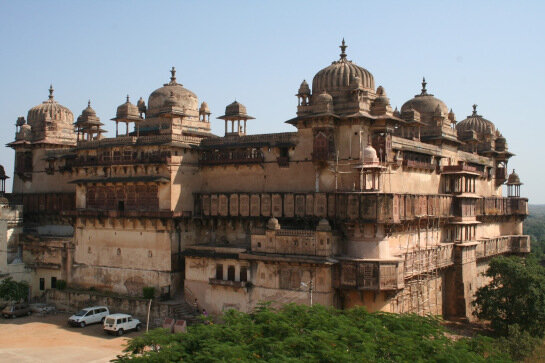Architectural Heritage of Orchha | 28 May 2019
The architectural heritage of Orchha town has been included in the tentative list of UNESCO’s world heritage sites.
- Orchha town in Niwari district of MP’s Bundelkhand region has a peculiar style of architecture used by the Bundela dynasty.

- The town, located on the banks of river Betwa, around 80 km from MP’s Tikamgarh district and 15 km from Jhansi district of UP, was built by King Rudra Pratap Singh of Bundela dynasty in the 16th century.
- If it makes it to the final list of UNESCO’s World Heritage Sites, it would be the 38th site in India to form part of the treasured list.
- Three historically famous sites in MP, including the rock shelters of Bhimbhetka, Buddhist monuments at Sanchi, and the Khajuraho group of monuments are among the 37 Indian heritage sites on the UNESCO list.
Orchha Architecture
- The word Orchha or Urchha means ‘hidden’. The reason for this naming is because the Bundelkhand Kings wanted to retreat from the Tughlaqs who rose to power in 15th century.
- Established in 1501 by Maharaja Rudra Pratap Singh, Orchha has witnessed tough times as well as friendly relations with the Mughal Dynasty.
- Orchha architecture has a blend of Bundelkhandi and Mughal influences.The structures are not only appreciated for their mesmerizing beauty but also for their intelligent engineering.
- The most fascinating of all the magnificent surroundings is the Orchha’s Fort complex.
- It is known for its chaturbhuj temple.
- The grand Orchha Complex is divided into three mesmeric sections; Jahangir Mahal, Raj Mahal and Sheesh Mahal.
- The Raj Mahal was once the prime residence of Bundela kings and their queens.
- Secret alleys, steep stairs and exquisite murals depicting avatars of Lord Vishnu, whom the super religious king of Bundelkhand; Madhukar Shah worshipped, narrate the story of a powerful era gone by.
UNESCO’s World Heritage Site List
- The United Nations Educational, Scientific and Cultural Organization (UNESCO) seeks to encourage the identification, protection and preservation of cultural and natural heritage around the world considered to be of outstanding value to humanity.
- This is embodied in an international treaty called the Convention concerning the Protection of the World Cultural and Natural Heritage, adopted by UNESCO in 1972.
- A World Heritage Site is a place that is listed by UNESCO for its special cultural or physical significance. The list of World Heritage Sites is maintained by the international 'World Heritage Programme', administered by the UNESCO World Heritage Committee.
